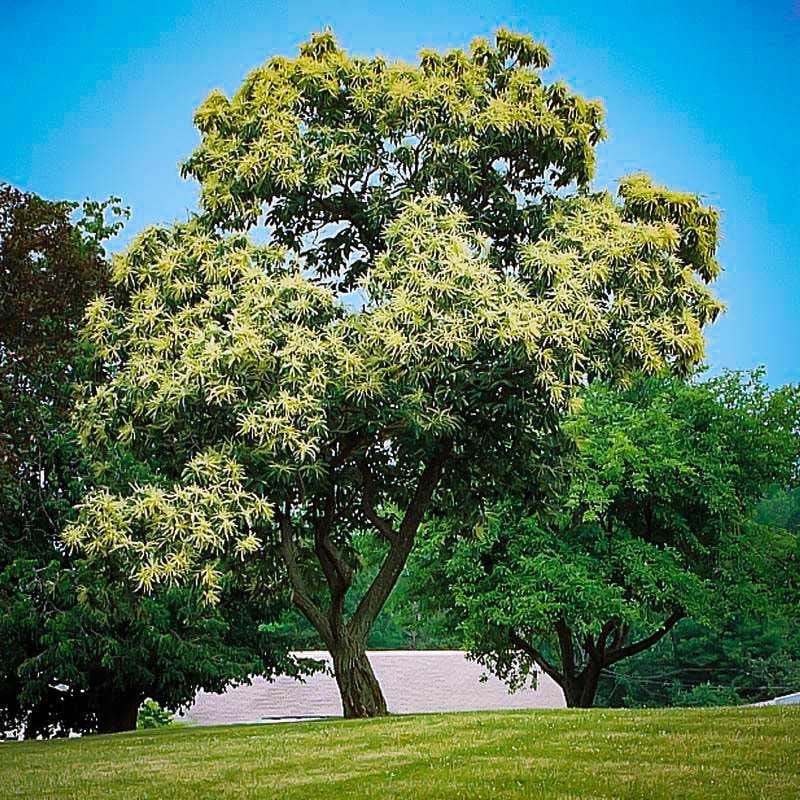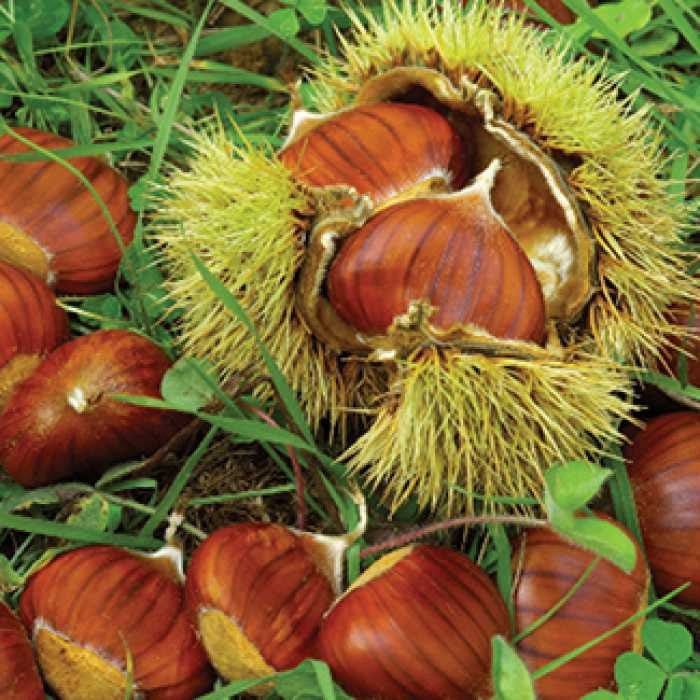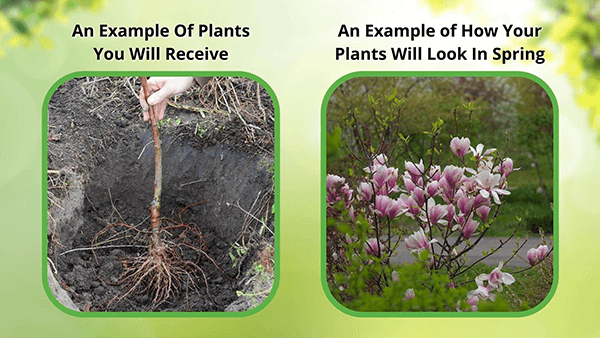Chinese Chestnut Tree
Chinese Chestnut Tree
| Order | Percentage Discount | ||
|---|---|---|---|
| 2-5 | 25% Off | ||
| 6-10 | 30% Off | ||
| 11-25 | 35% Off | ||
| 26-50 | 45% Off | ||
| 51+ | 65% Off | ||
Couldn't load pickup availability
5-7 Days
Over 25 Feet
Sun or Shade
4-9
Shade
Bare-root
LA. FL
Chinese Chestnut Tree - Castanea Mollissima
The Chinese Chestnut tree is a unique tree native to China and other East Asia. It is a member of the Fagaceae family and is closely related to the American chestnut tree (Castanea dentata). The tree can grow up to 30 meters tall and has a spreading, rounded crown. Its leaves are large, glossy, and dark green, with serrated edges. In the autumn, the leaves turn yellow to bronze before Fall (End of October)ing off.
Produce and Purpose
The tree produces edible nuts enclosed in a spiny, green bur. The nuts are sweet and have a slightly crunchy texture when roasted. They are used in various dishes, including desserts, stuffing, and soups. The trees are also used for ornamental purposes due to their attractive foliage and bark. They are hardy trees that can tolerate a range of soil types and temperatures.
Planting Chinese Chestnut Tree
The trees can be planted in various locations, but they prefer well-draining soils with a neutral pH between 6.0 and 7.5. They can grow in full sun or partial shade and require at least six hours of sunlight daily. When selecting a planting site for a tree, choose an area free from competition with other trees and shrubs. The tree needs adequate space to spread its roots and grow to its full size. Ensuring the site has good air circulation is also essential to prevent the development of fungal diseases, and planting the trees in the Spring of 2024 after the last frost is recommended. It is important to note that these trees can grow quite large, leaving enough space between the tree and nearby structures, such as buildings or power lines.
Tree Benefits
Castanea mollissima is aptly named for its original home, mainland China. It is a tree that can grow anywhere from forty to sixty feet tall in maturity. The tree is resistant to the common Chestnut blight and tolerates common pests such as deer, which benefits the tree's lifespan.
The tree grows well in hardiness zones 4 through 7 and prefers a well-drained soil type with a pH between 5.5 and 6.5 (slightly acidic to neutral). After planting, this tree will grow two to three feet annually. It takes about three to five years to produce fruit after planting, which is more than most trees take to flower and produce fruit.
Because this tree is apt to produce fruit, it is essential to remember to cultivate an outdoor space that is amenable to pollinator life. Because this tree is a medium-sized, low-canopy type, it provides shade for those hot afternoons.
Appearance
This tree's leaves are beautiful, dark green, and average about a half-foot (five to eight inches) in length. This deciduous tree provides shade and produces beautiful mellow yellow-white flowers. After these showy flowers fall, they are replaced by hardened chestnuts of a lovely brown color.
These low-lying trees are an excellent addition to your backyard or garden because they are low-maintenance and gorgeous. In particular, the large leaves, which are oblong and shiny, provide a talking point, giving them a different look than the traditional deciduous trees of the United States.
The leaves change from rich green to calm yellow and brown in the fall before shedding. In landscaping, this tree can be a wonderful centerpiece of your outdoor space or can be used to fill in the outside of your space for a beautiful, lush perimeter.
This Is How Your Plants Will Look upon Delivery
Bloom/Foliage Color
Yellow
Shipping date depends on the date displayed and chosen when you order from the product's page.
We only accept returns on plants verified dead. If you think your plants have died, we offer a 1 year warranty, please use use this File a Claim Link to verify dead plants and start with return warranty process.









